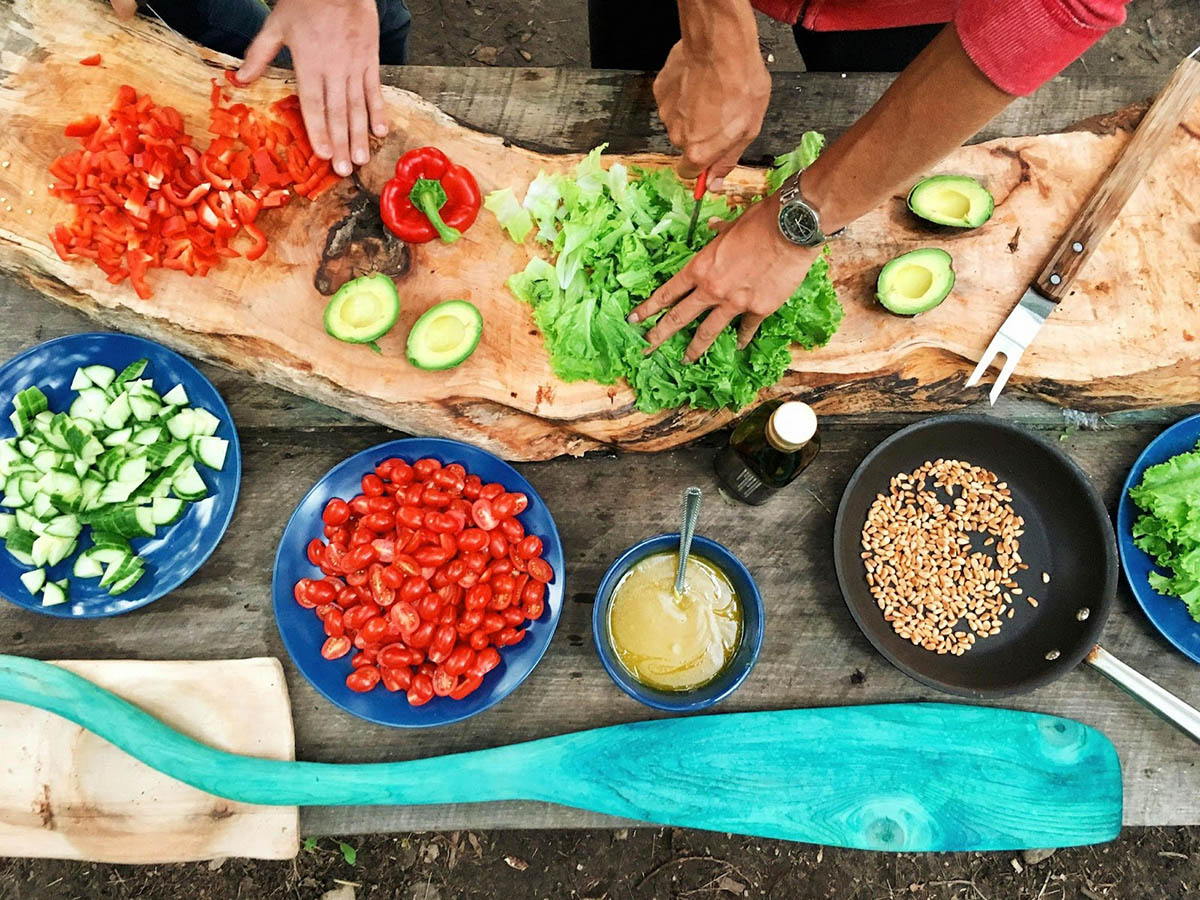Picky eating isn’t just for toddlers. You might imagine a child who will only eat grilled cheese and pizza pockets when someone describes a picky eater, but picky eating affects the young and old. Often, picky kids become picky adults, and this becomes problematic when you’re trying to incorporate healthier foods into your diet.
Picky eating is becoming more common, especially with the rise of processed foods. These foods have highly addictive ingredients and preservatives. In fact, some processed and fast foods are designed to have addictive properties. Similarly, processed foods are predictable. If you buy a box of Wheat Thins, you will find the exact same cracker every time you reach in the box. It is the same size, color, texture, and flavor.
That can only highlight the challenge of adding whole foods that aren’t as predictable. A box of Wheat Thins is the same every time you buy it, but a box of blueberries is not. The shape may change along with the color and texture depending on ripeness. Whole foods can go bad and the flavor can be dramatically different depending on various factors. And these variations typically occur every time you buy it as well as within the box you buy. Sometimes the only thing predictable about whole foods is that they are unpredictable. This is just the start of explaining why it can be more challenging to incorporate new whole foods into your diet.
What makes someone a picky eater and why?
Picky eaters are defined as being willing to eat less than 15 different foods. If you or someone in your family is eating less than 10 foods it might be worthwhile to reach out for professional help since picky eating can actually turn into a medical or psychological concern. Most picky eaters don’t fall into this category though and a few strategies along with some motivation to grow in this area can bring about change. Eating above 20 different foods is average. Within those 20 foods, though, the average American is eating the same 7-10 meals, so if you are trying to switch your diet to something healthier, don’t get overwhelmed by endless recipes online.
As you dive into adding more foods to your diet, consider what makes you a picker eater. Is it taste? Texture? Temperature? If it’s taste, consider what sorts of things you like and don’t like. Do strong flavors bother you? (ie. curry) Is it a certain flavor profile? (ie. common flavor combinations like peanut butter and chocolate or lemon and garlic) Is it a certain taste? (ie. salty, sweet, bitter, sour, and umami) Taste isn’t the only factor in what foods someone likes.
Food is directly linked to experience, so consider what experiences you’ve had with food that inform what you like and dislike. Depending on what you find in your experiences, consider meeting with a professional to work through these challenges so you are more open to trying new foods. Strategically thinking about the reasons you are a pickier eater will help you create a strategy for change.
Tips for helping picky eaters



Watch Your Mouth – The best place to start is by watching how you talk! This includes not just the things you say out loud, but also the things you say to yourself in your head.
First, stop labeling yourself or others as “picky eaters.” Labels like this can be a helpful description but more often they become an identity that one starts to live up to. At some point, you have to stop identifying as a picky eater if you want to stop being one. The same is true for your child or family member. If you want them to stop being picky, you’ll have to stop describing them that way at some point. When does someone stop being a picky eater? Do you have to add 1 food? 4 foods? This line is arbitrary, so start re-identifying yourself or others now.
Additionally, watch what you say and think about foods. You may try a food you end up not liking it, but don’t decide that for yourself before you try it. Similarly, don’t tell your family member who is expanding the foods they eat that they won’t like something. Controlling the story you tell yourself about the foods you eat is foundational to growing in the foods you will eat. Here are a few ideas for how to control the story in your own head about foods you try:
- Make a game of it
- Highlight the things you think you’ll like about the meal.
- Don’t focus on the new food.
- Laugh at what “worst case scenario” is. (Spoiler alert: Worst case scenario is you not liking it, spitting it out and taking a bite of something else. A very short-lived pain!)
Find motivation – If you’re reading this blog, you know that you should or you want to add new and more nutritious foods to your diet! There are specific benefits from foods. Often, if you know the nutritional benefits of the foods you eat, it can build motivation to add those foods to your diet. For example, one cup of rice and one cup of sweet potato are not equivalent in nutritional value.
You get the same amount of food, but one cup of sweet potato has almost twice the vitamins and minerals than rice and is a higher quality carbohydrate for your body. On the flip side, many processed foods contain high amounts of sugar and are actually addictive and are linked to major health concerns. Take time to learn about the nutritional benefits of the foods you eat along with the consequences of processed foods.
Learn to Cook – A common recommendation for kids who are picky eaters is to teach them to cook. Often when a child is a part of preparing the food it isn’t as scary to try it. This is true of adults as well. If cooking is unfamiliar to you, take time to learn some basic techniques. There are countless paid and free ways to learn online, so find a strategy that excites you and dive in. You could even choose to watch different cooking shows.
As you try different foods, focus on adding whole foods and choose a recipe that looks good to you. How you prepare the food can set you up for success. If texture is something important to you, steaming might not be the best option since most steamed foods get soft and mushy. Roasting can be an excellent alternative because it cooks foods while also making them crispy. Explore different methods of cooking and try them on different foods such as sauteing, grilling, roasting, baking, steaming etc.
Another good strategy is to pair new foods with foods you already enjoy. A great example of this is bacon maple Brussels sprouts. Brussels sprouts aren’t many people’s favorite food, but often people love bacon! Find a recipe that combines your new food with other ingredients you enjoy and you’ll be surprised how easy it is to add in food you didn’t think you liked.
Eat with Others – Meals should be social and a time of connection. If at all possible, eat with other people. As you try new foods, ask your friends and family to support you in helpful ways. That may mean asking them to keep you accountable or asking them to not comment at all. Sometimes drawing attention to a new food actually can deter people. For example, if your child tries a banana for the first time it might not be helpful to stop other conversations and say, “Woah! I can’t believe you just ate a banana!”
Eating with people can also create a helpful distraction as you try new foods. Eating can become more about conversations instead of focusing solely on the foods on your plate. Remember, controlling what you tell yourself as you sit and eat is a big part of your success, so refer to the first tip.
Start Small and Keep Trying! – If you have a whole list of foods you don’t like but wish you did, start small and easy. Pick a food to add first that you are curious about and seems like it might be easier to add in, possibly because you have a recipe that looks tasty. If you can start with a food that you end up enjoying, you’ll be encouraged to keep trying. If you don’t like a food, don’t stress over it (see the first tip again), just keep trying.
Start with small bites and small recipes as well! If you are trying something new, don’t make a triple batch. Start with a small recipe that doesn’t waste food if you end up not liking it, but also try small bites. Most children need to be exposed to a food many times before they try it – possibly more than 10 times before they start to like it. Adults are no different, so try small bites at multiple meals.
Want more information? Check out the resources below that were used in this blog:
How to Overcome Picky Eating as an Adult
Picky Eating 101: Texture Issues
Turning My Picky Eater Around: An Easy to Follow Plan


